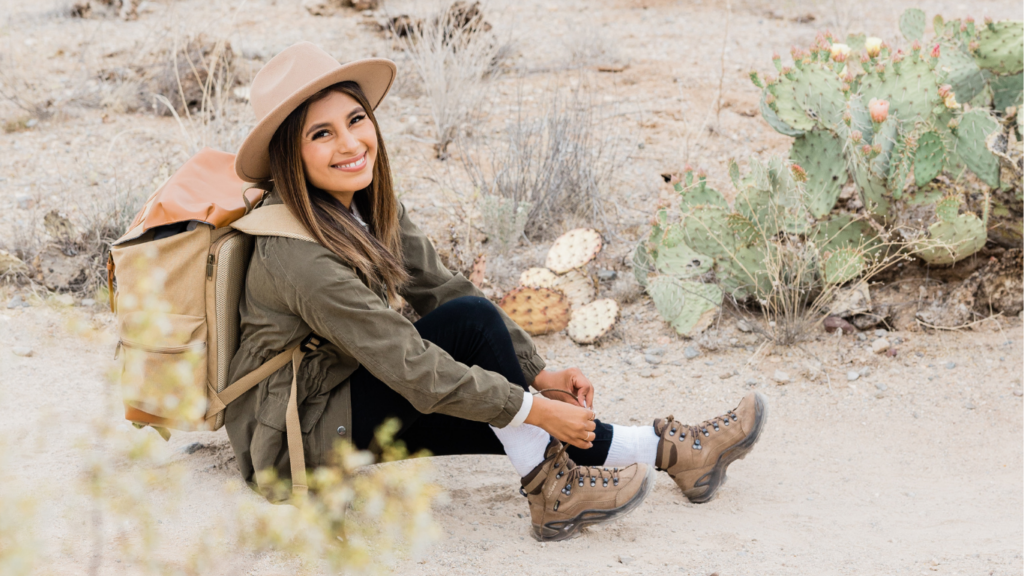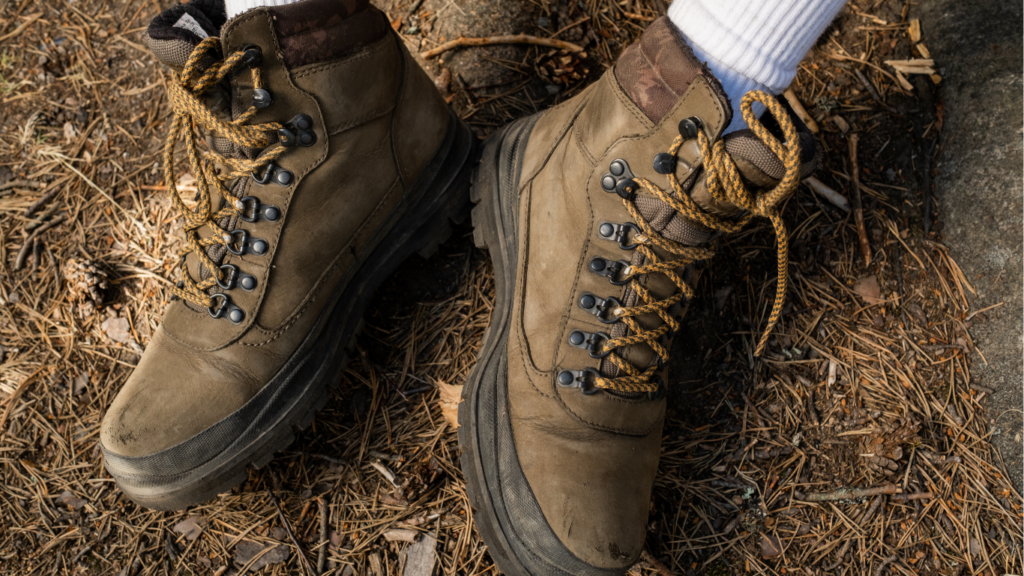The Importance of Choosing the Right Hiking Boots
Wearing the correct hiking boots significantly impacts your hiking experience. Proper boots provide essential support, reducing the risk of ankle injuries and ensuring stability on uneven terrain. High-quality materials ensure durability, preventing wear and tear even on the harshest trails.
Well-fitted hiking boots also prevent blisters and foot fatigue. Ill-fitting boots can cause pain and discomfort, cutting your hikes short. Invest in boots with a snug yet comfortable fit to keep your feet in optimal condition during long treks.
In choosing hiking boots, consider the specific trail conditions. For muddy paths, look for boots with excellent traction. Waterproof boots are essential for wet environments. Each boot’s design suits different terrains, enhancing both safety and performance.
Lastly, the right hiking boots improve overall hiking efficiency. Lightweight boots reduce strain, allowing me to cover more ground with less effort. Opt for boots tailored to your hiking style and trail type for the best results.
Key Features to Consider
Choosing the right hiking boots involves understanding key features that impact performance and comfort. Essential aspects like:
- comfort
- durability
- traction
- waterproofing
play crucial roles in a successful hiking experience.
Comfort
Comfort directly affects the hiking experience. Boots with adequate cushioning and arch support minimize foot fatigue on long hikes. Look for boots with ergonomic designs and materials like memory foam insoles, which adapt to foot shape. Ensure proper fit by checking for heel stability and toe box space to prevent blisters.
Durability
Durability ensures longevity and resilience on rugged trails. Quality materials like full-grain leather and nylon mesh offer superior wear resistance. Reinforced stitching and protective toe caps extend the life of boots. High-quality hiking boots withstand environmental stress, reducing the need for frequent replacements.
Traction
Traction is vital for maintaining stability on various terrains. Deep-lug outsoles made of durable rubber provide excellent grip on slippery surfaces. Multidirectional lugs enhance boot-ground contact, improving balance. For technical trails, choose boots with specialized tread patterns designed for specific conditions.
Waterproofing
Waterproofing keeps feet dry in wet environments. Boots with GORE-TEX linings or similar waterproof membranes block moisture while allowing breathability. Seam-sealed construction and water-resistant coatings further enhance protection. Effective waterproofing prevents discomfort and health issues like blisters and trench foot on soggy trails.
Top 10 Must-Have Hiking Boots for Every Trail

Choosing the right hiking boots can make or break a hiking experience. Here’s a curated list of the top 10 must-have hiking boots for various trail conditions.
Boot #1: Salomon Quest 4D 3 GTX
The Salomon Quest 4D 3 GTX offers excellent support with its 4D Advanced Chassis. The GORE-TEX membrane ensures waterproofing while maintaining breathability. It provides comfort during long hikes with its ergonomic design and cushioned insoles.
Boot #2: Merrell Moab 2 Mid Waterproof
Merrell Moab 2 Mid Waterproof boots feature strong traction with their Vibram TC5+ outsoles. The M Select DRY membrane provides waterproof protection, and the air cushion in the heel adds stability and absorbs shock.
Boot #3: Vasque Breeze AT Mid GTX
The Vasque Breeze AT Mid GTX combines durability and comfort. The GORE-TEX membrane keeps feet dry, and the Vibram Contact Grip outsole offers exceptional traction. It’s designed with a TPU shank for extra stability.
Boot #4: La Sportiva Nucleo High II GTX
La Sportiva Nucleo High II GTX boots use Nano Cell 2.0 technology for maximum breathability and waterproofing. The Vibram Nano sole delivers superior grip, making these boots ideal for varied terrains.
Boot #5: Scarpa Zodiac Plus GTX
Scarpa Zodiac Plus GTX boots feature the Sock-Fit DV construction for a snug fit. The asymmetric lace system enhances comfort, and the GORE-TEX Performance Comfort membrane ensures waterproofness and breathability.
Boot #6: Lowa Renegade GTX Mid
Lowa Renegade GTX Mid boots boast a full-length stabilizer for support on rocky trails. The Monowrap frame construction reduces weight, and the GORE-TEX lining provides waterproof protection.
Boot #7: Keen Targhee III Waterproof Mid
Keen Targhee III Waterproof Mid boots offer notable durability with their leather and performance mesh uppers. The Keen.Dry waterproof membrane keeps feet dry, and the dual-density EVA midsole provides cushioning.
Boot #8: Hoka One One Sky Kaha
Hoka One One Sky Kaha boots prioritize comfort with their plush EVA midsole. The eVent waterproof bootie keeps moisture out, and the Vibram Megagrip hi-traction outsole ensures grip on all surfaces.
Boot #9: Columbia Newton Ridge Plus II Waterproof
Columbia Newton Ridge Plus II Waterproof boots are lightweight yet offer robust support. The Omni-Grip rubber outsole provides traction, and the seam-sealed construction ensures waterproofing.
Boot #10: Oboz Bridger B-DRY
Oboz Bridger B-DRY boots feature an integrated shank for torsional stability. The B-DRY waterproof membrane keeps feet dry, and the Granite Peak outsole offers traction and durability.
Selecting the right boots from this list provides a blend of comfort, durability, and tailored performance, making them essential for every trail condition.
How to Choose the Best Boot for Your Needs
Selecting the right hiking boots ensures comfort, safety, and durability on the trail. Consider several factors to find the perfect pair.
Type of Terrain
- Different terrains require specific boot features.
- For rocky trails, choose boots with excellent ankle support and durable outsoles.
- Wet and muddy conditions call for waterproof boots with high traction.
- Lightweight and breathable options work best for well-maintained, flat trails.
- Ensure your boots match the terrain to avoid discomfort and injury.
Length of Hikes
The duration of your hikes impacts your boot choice. For short hikes lasting a few hours, opt for lightweight boots or trail shoes. These offer flexibility and reduce fatigue. For multi-day treks, invest in robust boots with ample cushioning and support to handle heavier loads and protect against foot fatigue. Matching your boot to the hike length helps maintain comfort and performance.
Maintenance Tips for Hiking Boots
Proper maintenance of hiking boots extends their lifespan and ensures performance. Follow these simple steps to keep your boots in top condition.
Cleaning
Clean boots after every hike. Brush off dirt and debris while they’re dry to prevent it from setting in. Use lukewarm water and a mild detergent to wash off any remaining dirt. Avoid soaking the boots to preserve their material integrity. Remove the insoles and laces for thorough cleaning. Let them air dry naturally, away from direct sunlight or heat sources.
Storage
Store boots in a cool, dry place. Avoid damp areas to prevent mold and material degradation. Use a boot tree or stuff them with newspaper to maintain their shape. Ensure the boots are completely dry before storing to avoid odors and material breakdown. Keep them away from chemicals or abrasive surfaces to maintain their outer and inner material quality.




